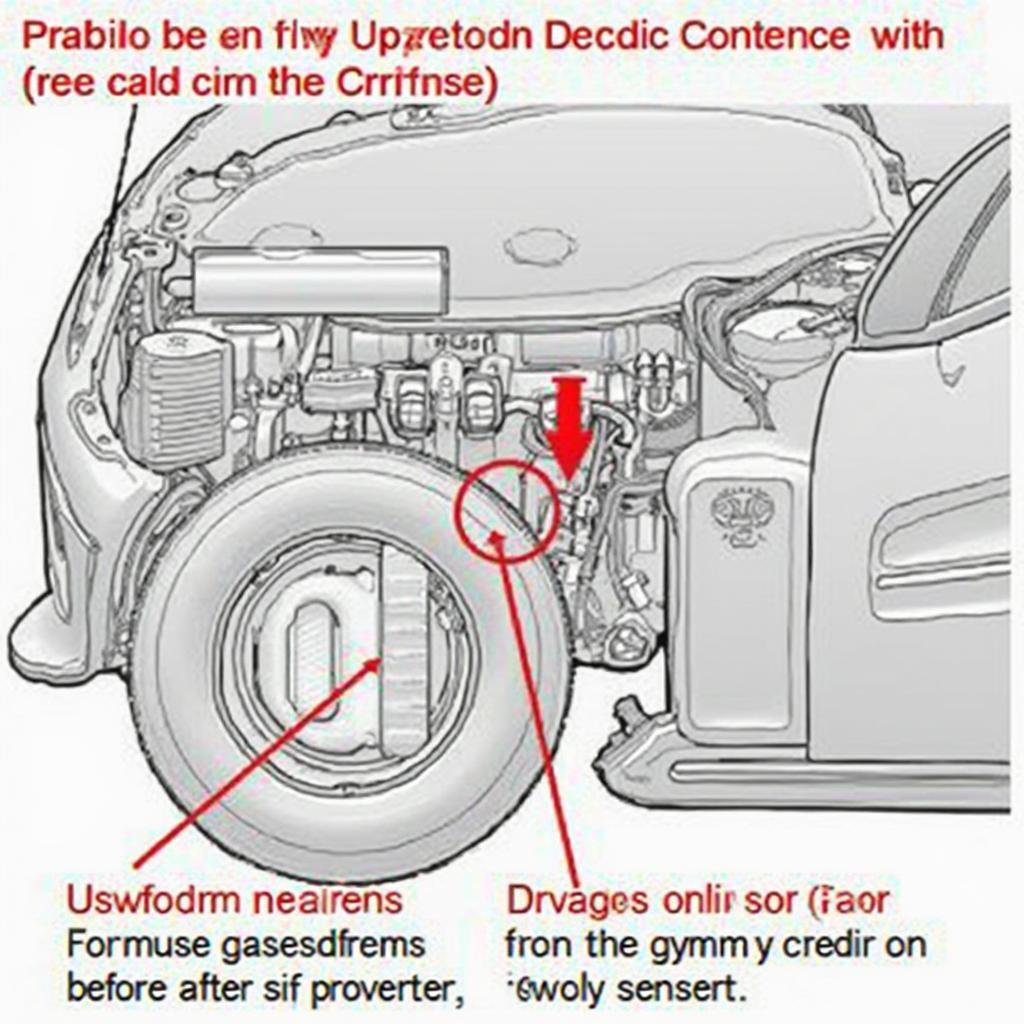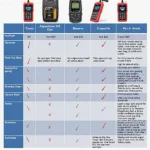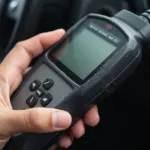The dreaded OBD2 code P0420. It’s a common sight for many car owners and can be a source of frustration and confusion. This code indicates a problem with your vehicle’s catalytic converter system, specifically “Catalyst System Efficiency Below Threshold (Bank 1).” In this comprehensive guide, we’ll delve into the intricacies of P0420, exploring its causes, symptoms, diagnostic procedures, and potential solutions.
Understanding what the P0420 code means is the first step towards resolving the issue. The catalytic converter is a crucial component of your vehicle’s exhaust system, responsible for converting harmful pollutants into less harmful substances. When the P0420 code appears, it suggests that the catalytic converter in Bank 1 (the side of the engine with cylinder #1) is not operating efficiently enough. This can be due to various reasons, ranging from a faulty oxygen sensor to a damaged catalytic converter. Even a minor issue like a small exhaust leak can trigger this code. If you’re experiencing this, tools like an obd2 scanner p0420 can be invaluable in diagnosing the problem.
What Causes OBD2 Code P0420?
Several factors can contribute to the P0420 code. Identifying the root cause is essential for effective repair. Here are some of the most common culprits:
- Faulty Oxygen Sensors: The oxygen sensors monitor the exhaust gases before and after the catalytic converter. A malfunctioning sensor can send incorrect readings to the engine control module (ECM), triggering the P0420 code.
- Damaged Catalytic Converter: Physical damage or internal degradation of the catalytic converter can reduce its efficiency.
- Exhaust Leaks: Leaks in the exhaust system before or near the catalytic converter can affect the oxygen sensor readings and trigger the code.
- Engine Misfires: Unburnt fuel from engine misfires can damage the catalytic converter over time, leading to reduced efficiency.
- Rich Fuel Mixture: A rich air-fuel mixture can overheat the catalytic converter and damage it.
- Faulty Engine Control Module (ECM): While less common, a malfunctioning ECM can also cause the P0420 code. Sometimes, even specific car models, like those covered in the obd2 code p0420 toyota rav4 guide, can have unique ECM-related issues.
How to Diagnose OBD2 Code P0420
Diagnosing the P0420 code requires a systematic approach:
- Retrieve the Code: Use an OBD2 scanner to retrieve the code and any other related codes.
- Inspect the Exhaust System: Check for any visible leaks or damage in the exhaust system, particularly around the catalytic converter.
- Test the Oxygen Sensors: Use a multimeter to test the voltage output of the oxygen sensors. Compare the readings with the manufacturer’s specifications.
- Monitor the Catalytic Converter Temperature: Use an infrared thermometer to check the temperature of the catalytic converter. A significantly lower temperature than normal could indicate a problem.
What are the Symptoms of OBD2 Code P0420?
Sometimes, the P0420 code might not present any noticeable symptoms beyond the illuminated check engine light. However, you might experience:
- Decreased Fuel Economy: A malfunctioning catalytic converter can impact fuel efficiency.
- Loss of Power: Reduced engine performance can occur due to the inefficient catalytic converter.
- Failed Emissions Test: The P0420 code will almost certainly cause a vehicle to fail an emissions test.
How to Fix OBD2 Code P0420
The solution for the P0420 code depends on the underlying cause. Here are some potential fixes:
- Replace Faulty Oxygen Sensors: If the oxygen sensors are malfunctioning, replacing them is usually a straightforward fix.
- Repair Exhaust Leaks: Repairing any exhaust leaks can resolve the issue if that’s the root cause. Addressing this might even resolve related issues in specific models, as detailed in resources like 2007 civic 1.8l p0420 obd2 code.
- Replace the Catalytic Converter: If the catalytic converter is damaged or degraded, replacement is necessary.
- Address Engine Misfires: Fixing any engine misfires is crucial to prevent further damage to the catalytic converter.
- Correct Rich Fuel Mixture: Adjusting the fuel mixture to the correct ratio can prevent overheating and damage to the catalytic converter.
Conclusion: Tackling the P0420 Code Head-On
The OBD2 code P0420 signifies a potential problem with your catalytic converter system. Addressing this issue promptly is important for maintaining your vehicle’s performance, fuel efficiency, and environmental impact. By understanding the causes, symptoms, and diagnostic procedures associated with the P0420 code, you can take the necessary steps to resolve the issue and ensure the smooth operation of your vehicle. Resources like codigo obd2 p0420 can offer further assistance in different languages.
Frequently Asked Questions (FAQ)
- Can I drive my car with a P0420 code? While you can still drive, it’s recommended to address the issue promptly to avoid potential further damage and decreased fuel economy.
- How much does it cost to fix a P0420 code? The cost varies depending on the underlying cause and can range from a relatively inexpensive oxygen sensor replacement to a more costly catalytic converter replacement.
- How long does a catalytic converter last? Catalytic converters are designed to last for several years, but their lifespan can be shortened by factors like engine misfires and a rich fuel mixture.
- Is P0420 a serious problem? While not immediately dangerous, ignoring the P0420 code can lead to more serious problems down the line.
- Can I fix a P0420 code myself? Some fixes, like replacing oxygen sensors, can be done by DIYers with some mechanical experience. However, more complex repairs like catalytic converter replacement are best left to professionals.
- Will a P0420 code cause my car to fail emissions testing? Yes, a P0420 code will almost certainly cause a vehicle to fail an emissions test.
- Can a bad gas cap cause a P0420 code? While a bad gas cap can trigger other codes related to evaporative emissions, it’s unlikely to directly cause a P0420 code.
For further information on specific car models and troubleshooting, check out our other articles such as obd2 code p0420 honda crv.
Need help? Contact us via WhatsApp: +1(641)206-8880 or Email: [email protected]. We have a 24/7 customer support team.


